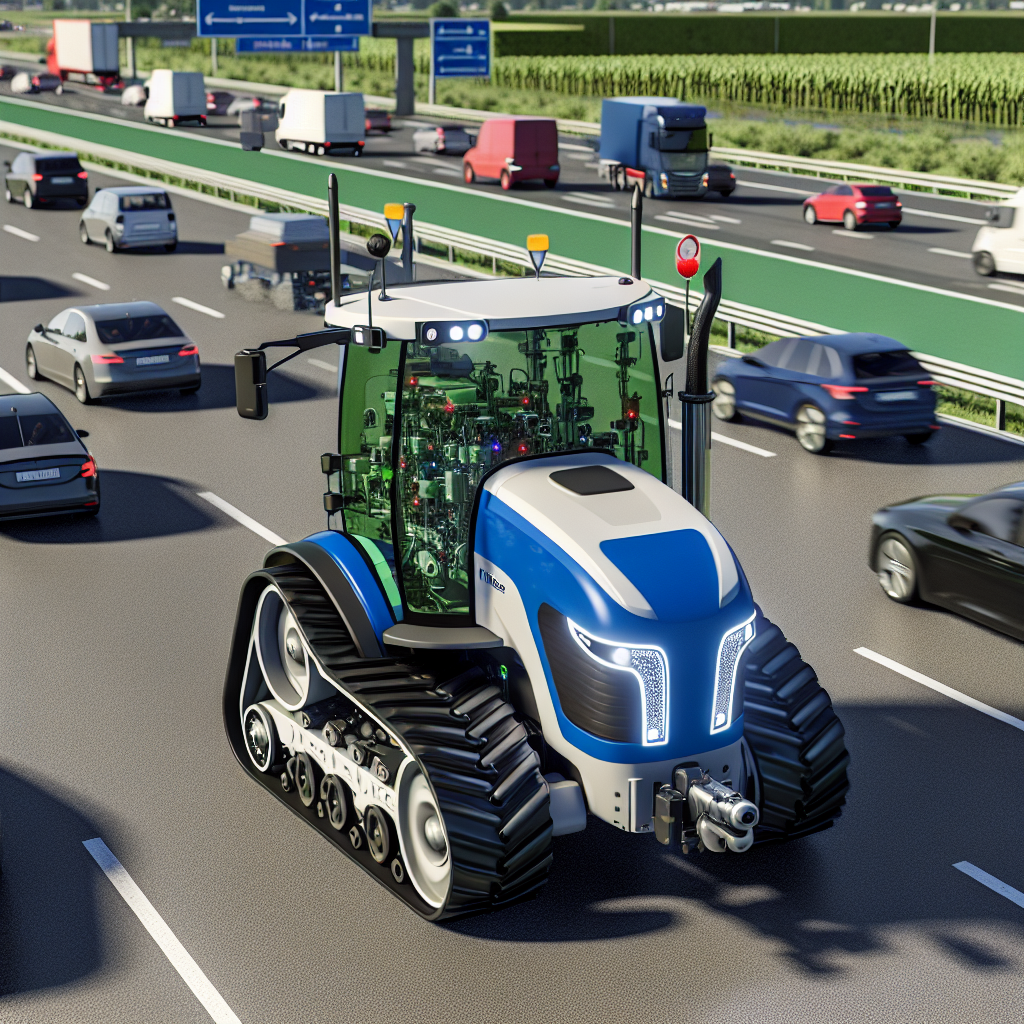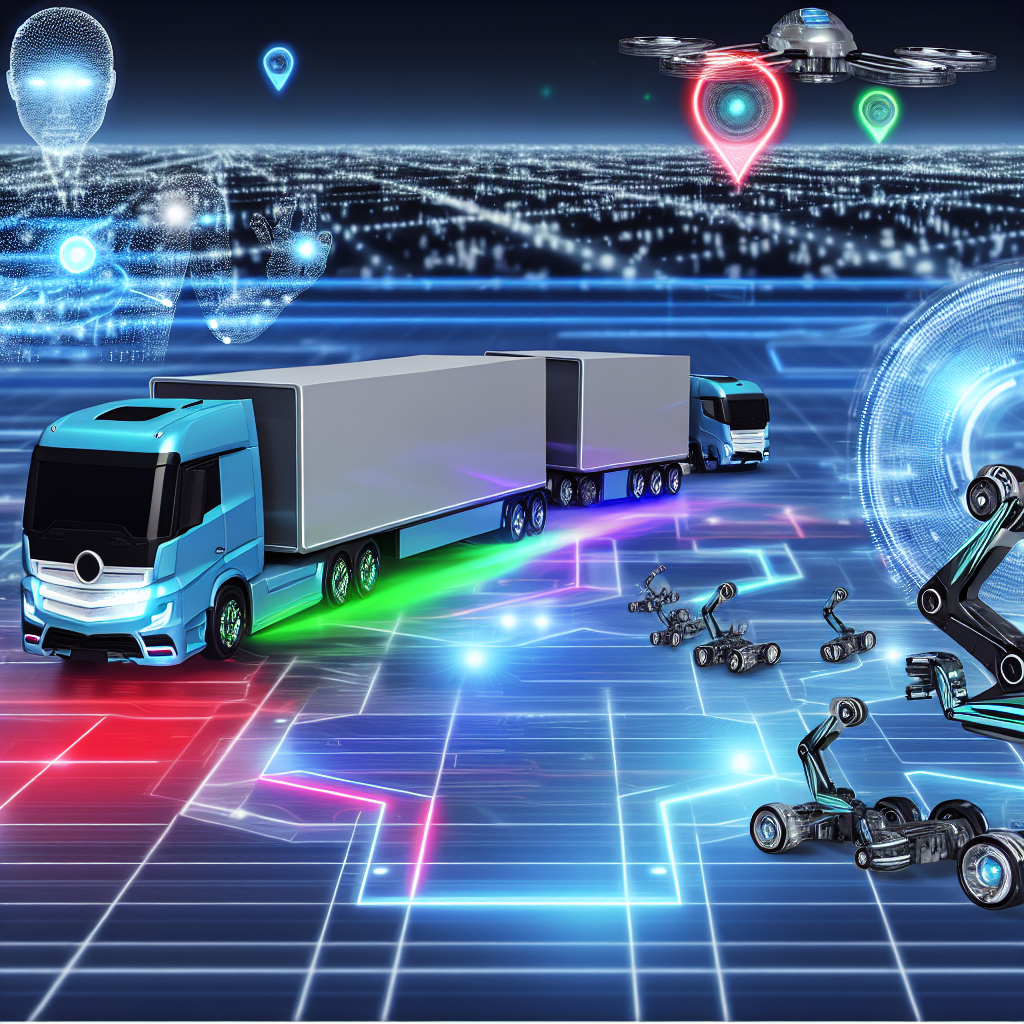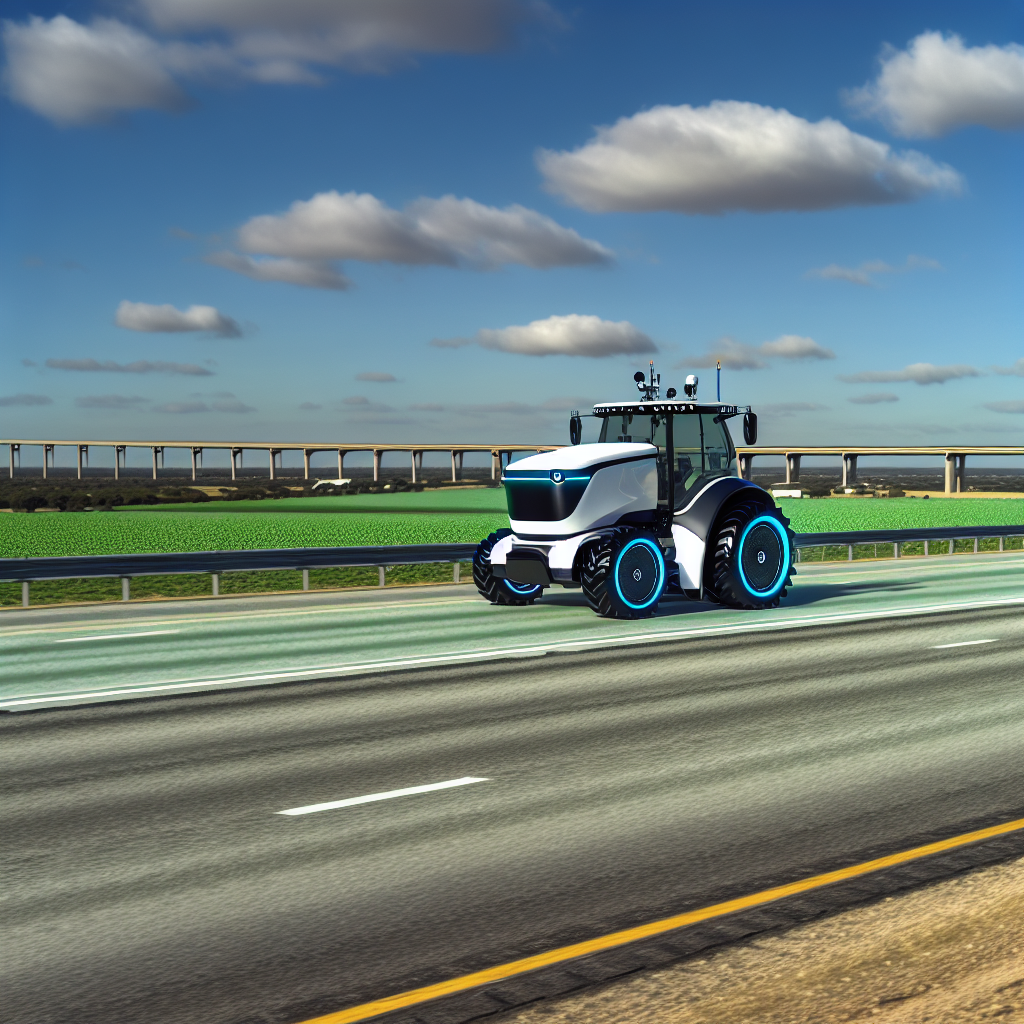In a groundbreaking leap for the trucking industry, the collaboration between International and PlusAI is set to redefine the future of transportation with the launch of their autonomous LT Series tractor pilot. As autonomous vehicles gain momentum globally, this partnership signifies a pivotal moment, showcasing the potential for enhanced efficiency, safety, and operational excellence.
The pilot, currently being tested along Texas’s Interstate-35 corridor, marks the introduction of second-generation autonomous trucks equipped with advanced AI technology and a multimodal sensor suite. This innovative approach not only aims to transform fleet operations but also hints at an industry revolution where intelligent automation, including autonomous trucking technology and the application of AI in logistics, becomes the norm, paving the way for smarter and more sustainable logistics solutions.
Pilot Launch Details
The pilot launch for the autonomous LT Series tractor by International and PlusAI is taking place along the highly trafficked Interstate-35 corridor in Texas. This strategic location stretches between Laredo and Dallas, making it an ideal testing ground for demonstrating the capabilities of autonomous freight transport in real-world conditions. The pilot is designed to run for several months, allowing for rigorous evaluation and data collection on various operational aspects.
Central to this trial is the integration of advanced technologies, notably the SuperDrive software and a sophisticated multimodal sensor suite. The SuperDrive software utilizes artificial intelligence to adapt to dynamic driving conditions, ensuring reliability and efficiency along the designated routes. Complementing this is a comprehensive sensor suite that includes imaging radar, lidar, and cameras, providing the autonomous LT Series tractor with 360-degree vision. This suite not only enhances navigation and obstacle detection but also significantly contributes to the safety and operational efficiency of the autonomous vehicle.
Throughout the pilot, the performance of the autonomous LT Series tractor will be assessed on metrics such as safety, efficiency, and user experience, with the aim of refining the technology for broader deployment in the trucking industry. This endeavor marks a crucial step toward seamless digital operations, positioning International and PlusAI at the forefront of the autonomous vehicle revolution within the logistics sector.

Technical Specifications of the Multimodal Sensor Kit
The LT Series tractor from International has a multimodal sensor kit provided by PlusAI. This kit uses imaging radar, lidar, and cameras to give the tractor a full 360-degree view. This feature is important for safe and effective movement in different driving conditions.
Imaging Radar: Imaging radar helps the tractor detect obstacles in various weather conditions like fog, rain, or snow. It sends out radio waves that bounce off objects, giving real-time information about their location and speed. This is crucial for avoiding collisions, especially in places where visibility is low.
Lidar: Lidar technology improves the tractor’s ability to see its surroundings. It uses laser beams to create a 3D map of the area. This detailed map helps the LT Series tractor recognize and differentiate between obstacles such as other vehicles, pedestrians, and road signs. This 3D mapping makes it easier for the tractor to make navigation and path planning decisions.
Cameras: An array of cameras adds to the data collected by the radar and lidar systems. They capture important details like traffic signs and lane markings that are necessary for safe driving. The cameras support the other sensors, helping to confirm and improve their data for better obstacle detection.
Together, these technologies allow the LT Series tractor to drive autonomously in various environments while ensuring a high level of safety. The combined 360-degree view from these sensors is vital for making informed driving decisions, which helps reduce accident risks.
Additionally, the SuperDrive software is crucial for the tractor’s operations. This AI software adjusts to new routes and changing conditions using real-world driving data. It analyzes information from the multimodal sensor kit to make quick decisions that improve the tractor’s safety and efficiency on the road. As the tractor experiences new situations, SuperDrive continuously learns and enhances its performance, making it a key part of the vehicle’s autonomous capabilities.
Adoption of Autonomous Vehicles in the Trucking Industry
As of October 2025, the adoption of autonomous vehicles in the trucking industry has been marked by significant developments and projections:
-
Projected Adoption Rates: Research by McKinsey & Co. indicates that 13% of heavy-duty, over-the-road trucks in the United States are expected to be autonomous by 2035, surpassing China’s projected 11% adoption rate. This growth is driven by factors such as driver shortages, rising logistics costs, and safety improvements.
[source] -
Market Growth: The global autonomous truck market was valued at USD 40.7 billion in 2024, with projections estimating it will reach USD 179.9 billion by 2035, reflecting a compound annual growth rate (CAGR) of approximately 14.4%. This substantial growth addresses industry challenges such as driver shortages and rising operational costs.
[source] -
Current Deployment: As of early 2025, over 1,000 self-driving trucks are operating globally, with approximately 400 active in the United States. Companies like Einride, Pony.ai, and Gatik lead these deployments, each operating fleets numbering in the hundreds.
[source] -
Technological Integration: In August 2025, Aurora Innovation partnered with McLeod Software to integrate its self-driving trucking platform into McLeod’s transportation management system. This collaboration aims to streamline the management of autonomous shipments, facilitating broader adoption of autonomous freight technology.
[source] -
Economic Impact: The autonomous truck market is projected to expand from USD 41.4 billion in 2024 to USD 139.5 billion by 2033, representing a CAGR of approximately 13.7% to 16.2%. This growth addresses industry challenges such as driver shortages, rising operational costs, and safety concerns.
[source]
These developments underscore a significant shift towards autonomous technologies in the trucking industry, driven by technological advancements, strategic partnerships, and economic imperatives.
Comparison Table: Traditional Trucking vs. Autonomous LT Series Tractors
| Metric | Traditional Trucking | Autonomous LT Series Tractors |
|---|---|---|
| Safety | Relies on human drivers; human error can lead to accidents | Advanced sensor suite and AI software significantly reduce accident risk |
| Efficiency | Varies based on driver availability and fatigue | Consistent performance; optimized routes and reduced downtime |
| Cost | Higher operational costs due to driver wages and training | Lower long-term costs with reduced reliance on human labor and improved fuel efficiency |
Customer Testimonial
Tobias Glitterstam, Chief Strategy and Transformation Officer at Navistar, emphasized the significance of the pilot program in a recent statement, saying, “This pilot program is a big step toward seamless digital operations that are designed to deliver an exceptional customer experience.” This reflection captures the essence of the pilot program’s goals. It highlights how the implementation of autonomous technology in the trucking industry not only seeks to improve operational efficiency but also enriches the customer experience by providing reliable, timely, and safe delivery services.
The comprehensive approach of this pilot aims to refine the technology and address the unique demands of customers in the logistics sector. By integrating advanced AI and multimodal sensor systems, the program is poised to redefine how companies approach freight transport, ultimately leading to enhanced satisfaction and trust among clients. International and PlusAI are committed to leveraging this pilot to set new benchmarks in customer service within the trucking industry.
Conclusion and Future Implications
The launch of the autonomous LT Series tractor pilot by International and PlusAI heralds a significant transformation for the trucking industry. As we look towards the future, the implications of this pilot extend far beyond the immediate trials along the Texas highway. The incorporation of advanced sensor technologies, coupled with the sophisticated SuperDrive AI software, promises marked improvements in safety. By reducing human error, the autonomous tractor aims to minimize accidents, creating a more secure environment for all road users.
Moreover, the integration of these technologies not only enhances safety but also boosts efficiency. The ability of the LT Series tractor to optimize routes and minimize downtime can lead to significant cost savings and increased productivity for fleets across the nation. As operational efficiency improves, we can expect a ripple effect that benefits consumers and businesses alike through faster delivery times and lower transportation costs.
Furthermore, the adoption of automated solutions in freight transport holds tremendous potential for the industry. With the projected growth of autonomous vehicles and the data-driven insights garnered from these pilot programs, we are on the cusp of a new era of logistics characterized by smarter, more autonomous operations.
Looking ahead, the trucking industry must embrace these advancements to remain competitive and impactful. As we continue to explore the possibilities that arise from the convergence of automation and logistics, the future appears promising for both operators and consumers alike. The journey towards autonomous freight delivery has only just begun, and the possibilities of innovation in this space are boundless.

Ongoing Challenges and Considerations
The deployment of autonomous vehicles, particularly in the transportation and trucking sectors, faces several significant challenges that must be addressed for successful integration into everyday logistics operations.
Regulatory Hurdles:
The regulatory landscape for autonomous vehicles is complex and often inconsistent. In the United States, the lack of standardized federal regulations results in a patchwork of state laws that complicate interstate operations for autonomous trucks. For instance, states like Texas and Arizona are more permissive in their testing protocols, while others impose stricter limitations, creating legal uncertainties for manufacturers and fleet operators. Moreover, existing safety regulations, predominantly directed toward human drivers, can conflict with the operations of autonomous vehicles. Current mandates may require human intervention in scenarios where autonomous capabilities should suffice, leading to inefficiencies and operational challenges.
Safety Concerns:
Safety is a paramount concern when considering autonomous vehicles. Despite advancements in technology, AVs still grapple with technical limitations, particularly in adapting to diverse terrains and unpredictable weather conditions. Sensor reliability and real-time data processing are critical for safe navigation, raising questions about the readiness of AVs for widespread public use. Additionally, there is a growing concern regarding cybersecurity, given the vast amounts of data and interconnectivity that autonomous systems rely on. A breach could have devastating outcomes, including loss of control over the vehicle.
Public Acceptance:
Public trust in autonomous vehicles is crucial, yet remains a significant barrier. Many consumers express skepticism about self-driving technology, driven by fears of potential safety incidents. Manufacturers face the challenge of demonstrating the reliability of AVs while countering negative perceptions. Furthermore, the potential for job displacement within the trucking sector has led to social and political pushback, complicating efforts to promote autonomous technology as a beneficial evolution of the industry.
To navigate these challenges effectively, a collaborative approach among industry stakeholders, regulators, and the public is essential. Developing comprehensive regulatory frameworks, advancing technological innovations, and fostering public confidence are critical steps in paving the way for the future of autonomous trucking.
By addressing regulatory uncertainties, enhancing safety protocols, and building trust with the public, the deployment of autonomous vehicles can move from potentiality to reality, revolutionizing the logistics landscape and improving operational efficiencies.
Key Features and Benefits of the Autonomous LT Series Tractor
The autonomous LT Series tractor showcases several key features and benefits that position it at the forefront of autonomous vehicle technology. Understanding these attributes is essential as they illustrate the capabilities and competitive advantages that this innovative vehicle brings to the trucking industry.
- Multimodal Sensor Integration: The advanced multimodal sensor kit enables comprehensive awareness of the environment, ensuring safety and effective decision-making on the road.
- AI-Driven Software: The SuperDrive software enhances route efficiency, learns from real-time data, and adapts to new driving conditions, ensuring high performance under various circumstances.
- Safety Enhancements: With features like 360-degree vision, the tractor significantly reduces the risk of accidents, ensuring a safer driving environment for all stakeholders.
- Operational Efficiency: The automation reduces downtime and optimizes logistics operations, leading to substantial cost savings for fleet operators and improved service delivery.

